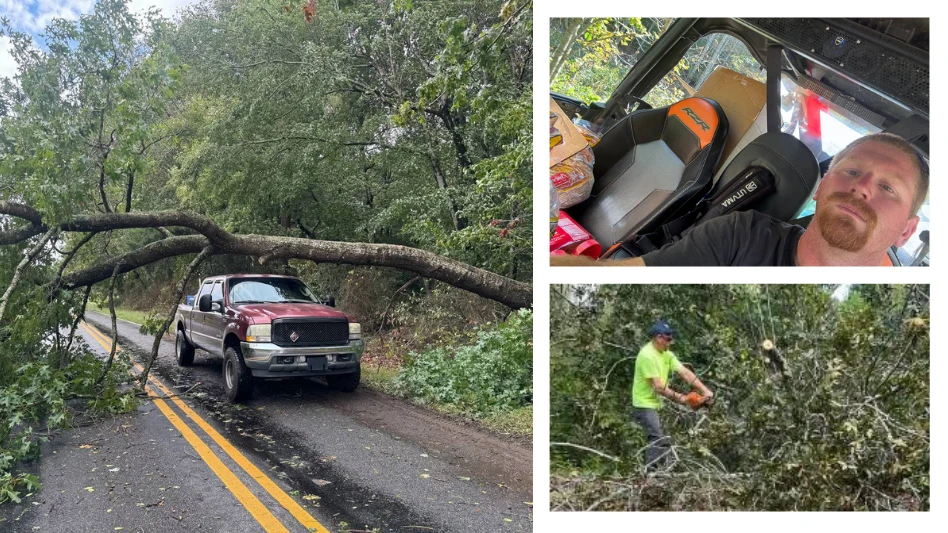As a lawn care contractor signing up customers for fertilization, you know what service you’ll provide and what that service will do on their properties. But do they?
“Lawn care professionals need to realize how much information they have to communicate to their customers and see how little of it they actually communicate,” noted Jim Brooks, executive director, The Lawn Institute, Marietta, Ga. “Rather than just saying what a fertilizer is, explain to the customer what those numbers on the label mean and why you’re putting down 4 pounds of nitrogen and not 2 pounds.”
| Just The FAQs (Frequently Asked Questions) |
“When we get questions on granular vs. spray applications, I ask the customer what has to happen before a granular application does any good,” said Paul Harder, president, Prescription Turf Services Inc., Middleton, Mass. “Then they realize it has to rain, so we end up with liquid fertilizer. This helps them understand there’s little difference between the two.” “New customers who just moved into our area of the country can have unrealistic expectations,” noted Kirk Poulnot, franchise owner, Spring-Green, Mt. Pleasant, S.C. “They may have had Kentucky bluegrass in their yard before, but we have St. Augustinegrass here, so there’s no way anyone can give them that same green color they’re used to. We have to make sure we tell them up front what to expect so they’re not upset or disappointed later.” Chuck Darrah, general manager, CLC Labs, Westerville, Ohio, said customers’ concerns about the materials in a fertilizer are usually unnecessary. “The three main compounds are urea, ammoniated phosphates and potash,” he said. “These substances are commonly used in other applications such as animal food fortifiers.” “Customers may be concerned about the fertilizer running off into wells or sewers, so explain to them that fertilizer applications make for healthy, dense turf, and turf is the best surface we have for capturing and holding particles,” said Jim Brooks, executive director, The Lawn Institute, Marietta, Ga. “Applying fertilizer to a lawn actually helps build turf and eliminate run off.” |
SELLING BENEFITS. Industry professionals agree the keys to establishing a successful relationship with a new fertilization customer are selling him or her on a lawn care partnership with the contractor and convincing them of the benefits of the contractor’s expertise. “A professional lawn care operator knows the correct timing, rate and sources of nitrogen materials to use,” explained Chuck Darrah, general manager, CLC Labs, Westerville, Ohio. “Conversely, homeowners apply too much nitrogen in the spring, which compromises root growth. Homeowners can’t see root growth, so they don’t understand they’re making the turf susceptible to heat and drought injury through the summer.”
Lawn care operators can establish their expertise in the customer’s mind by communicating the importance of fertilization basics. “Explain to customers that the correct timing with cool-season grasses is in September,” Darrah continued. “This is when the homeowner is disgusted with the lawn and has stopped applying fertilizer. But it’s the most important time for having optimum fertility on the lawn. The opposite is true for warm-season grasses. You have to sacrifice fall color to maximize winter growth.”
PARTNERSHIP PRINCIPLE. “We sell ourselves as well as our service,” said Kirk Poulnot, franchise owner, Spring-Green, Mt. Pleasant, S.C. “I explain that we offer a service, not magic, and that we’re licensed by the state. Customers have to understand that we’re doing more than putting down a bag of weed-and-feed and that they can’t put down the same quantity of quality products that we put down for the same price.”
“We give all new clients a two- to three-page piece explaining their responsibilities for the lawn which are necessary to make the program work,” mentioned Paul Harder, president, Prescription Turf Services Inc., Middleton, Mass. “It’s important they have something to hold on to and refer back to as time goes on and the weather changes.
“Also, one of our first questions of new customers is, ‘What do you expect us to accomplish?’” Harder continued. “We make sure their expectations are reasonable, and we tell them we’re expecting them to make a three-year commitment to our service to make a difference in the turf.”
| Learning Your N-P-Ks |
There are 16 essential nutrients required for plant growth, and these need to be in correct balance. Three of the 16 essential elements — carbon, hydrogen and oxygen — are taken primarily from air and water. The other 13 are absorbed from soil by plant roots. Fertilizers replenish the soil with these nutrients in the correct proportions. Those three numbers you find on most fertilizer product labels describe its grade, or the analysis of the three major nutrients: nitrogen (N), phosphorous (P) and potassium (K). For example, a fertilizer claiming a 12-4-8 analysis would include 12 percent nitrogen, 4 percent phosphorous and 8 percent potassium. From “Learning Your N-P-Ks: Understanding Fertilizer Chemistry,” April 1996, T&O Service Tech magazine. |
The author is Associate Editor of Lawn & Landscape magazine.

Explore the May 1997 Issue
Check out more from this issue and find your next story to read.





